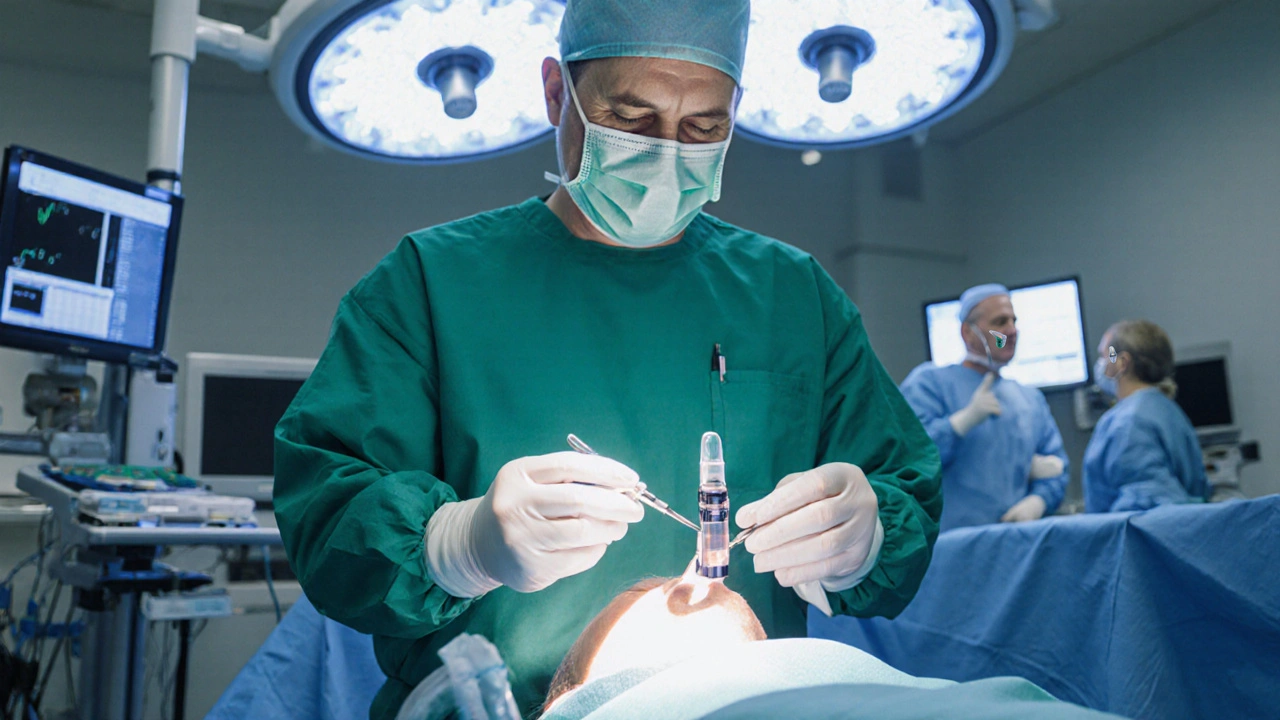Penile Prosthesis Infection: Risks, Causes, and Management
When dealing with Penile prosthesis infection, an infection that develops after a penile prosthetic device is implanted, usually due to bacteria forming a protective layer on the implant. Also known as prosthetic penile infection, it can turn a routine surgery into a painful problem. The implant itself, called a penile prosthesis, is a medical device designed to restore erectile function. Understanding how the device interacts with the body helps explain why infections occur and what can be done to stop them.
One of the biggest culprits is a biofilm, a thin, sticky community of bacteria that clings to the prosthesis surface. Biofilms shield bacteria from the immune system and make antibiotics less effective. Because of this, doctors rely on antibiotic prophylaxis, a pre‑surgical dose of antibiotics, to lower the odds that microbes will settle in this protective layer. The timing and choice of drug matter—a mismatch can let bacteria get a foothold before the body can react.
How the surgery is performed also shapes infection risk. A clean surgical technique that limits tissue trauma and reduces operating time cuts down on bacterial exposure. Surgeons often use a “no‑touch” approach, keeping the implant sealed until it’s inside the body. Patient factors such as diabetes, smoking, or a history of urinary infections add extra layers of vulnerability. Managing these conditions before surgery reduces the chance that bacteria will travel from the skin or urinary tract to the implant site.
Spotting an infection early can save the implant and the patient. Doctors use diagnostic imaging like ultrasound or MRI to look for fluid collections around the device. Lab cultures of any drainage confirm which bacteria are present, guiding targeted antibiotic therapy. Symptoms such as redness, swelling, fever, or pain while inflating the device signal that something is wrong and should trigger a quick work‑up.
Treatment often starts with a course of strong antibiotics that can penetrate the biofilm. If the infection doesn’t respond, the next step may be device explantation, removal of the prosthesis, followed by a clean‑out surgery. In many cases, a new device can be placed later once the infection clears. This staged approach balances the need to eradicate bacteria with the patient’s desire to regain erectile function.
Prevention and Early Detection
Preventing infection is a team effort. Pre‑operative education helps patients understand the importance of hygiene, controlling blood sugar, and quitting smoking. In the operating room, surgeons may coat the prosthesis with antibiotic‑impregnated material, creating a chemical barrier against microbes. Post‑operative care includes monitoring incision sites, keeping the area dry, and reporting any signs of infection right away. Regular follow‑up visits let doctors catch subtle changes before they become serious problems.
Overall, a penile prosthesis can dramatically improve quality of life, but infection remains the most common complication. By looking at the device itself, the bacterial biofilm, the use of antibiotics, surgical practices, and patient health, we get a full picture of what drives these infections and how they can be avoided. Below you’ll find a collection of articles that dive deeper into each of these areas—covering everything from drug choices to surgical tips and real‑world patient stories. Explore the resources to get practical advice you can use right now.

How Penile Surgery Fixes Common Penile Prosthesis Complications
Explore how penile surgery addresses infection, erosion, and mechanical failures of penile prostheses, with step‑by‑step options and real‑world outcomes.
September 27 2025